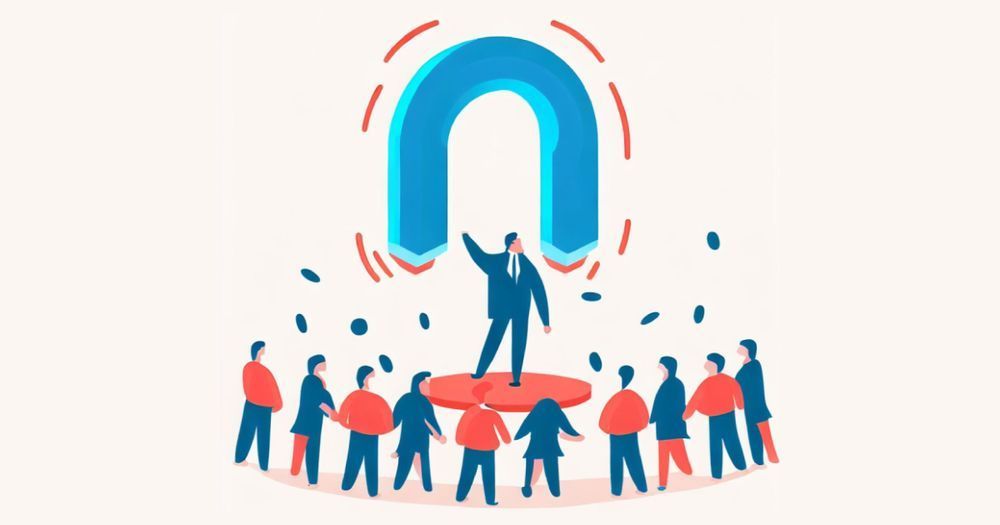Customer Acquisition vs Retention: Which is Best?

In the world of business, the pursuit of growth and sustainability is a constant tug of war between two essential strategies: customer acquisition and customer retention. Both are crucial, yet they demand distinct approaches and resources. The question that often plagues businesses is, "Which is the best path to follow?" In reality, it's not a matter of one versus the other; it's about finding the right balance.
This article will delve into the significance of customer acquisition and retention, the pros and cons of each, and how to strike a harmonious equilibrium between the two.
The Value of Customer Acquisition

Customer acquisition is the strategic process of identifying, targeting, and persuading potential customers to make their initial purchase from a business. It plays a fundamental role in expanding a company's market reach, increasing revenue streams, and maintaining competitiveness in a dynamic marketplace.
While customer acquisition can be costly, as it involves marketing, advertising, and sales expenses, its benefits lie in the potential for growth and securing a steady influx of new customers. However, it also comes with the challenge of converting prospects into customers, as businesses must convince them to try something new and stand out in a competitive landscape.
Pros of Customer Acquisition
- Market Expansion: Customer acquisition is the primary driver of growth for businesses. Attracting new customers allows you to expand your market reach, tap into untapped segments, and increase your brand's visibility.
- Revenue Surge: New customers mean new revenue streams. Acquiring customers brings immediate financial benefits and is often essential for startups and businesses in the early growth stages.
- Competitive Edge: It helps you stay competitive in a dynamic marketplace. Gaining new customers not only secures your market position but can also give you an edge by attracting customers from competitors.
Cons of Customer Acquisition
- Higher Costs: Acquiring new customers can be costly. Marketing, advertising, and sales expenses can quickly add up, especially if you're targeting a broad audience.
- Lower Loyalty: New customers may lack loyalty initially, and it takes time to build a strong relationship with them. This means that they might not provide the recurring revenue that loyal customers do.
- Conversion Challenges: Converting prospects into customers can be challenging, as you're essentially convincing them to try something new. The competition for their attention is fierce.
The Importance of Customer Retention

Customer retention focuses on maintaining and nurturing existing customer relationships to ensure long-term loyalty and repeated business. It is an essential aspect of business strategy, as it not only leads to increased customer lifetime value but also reduces customer acquisition costs.
By providing excellent customer service, personalized experiences, and incentives, companies can foster a sense of loyalty and trust, encouraging customers to remain committed to their brand. Customer retention is cost-effective and can contribute significantly to a company's profitability over time, as loyal customers are more likely to make frequent purchases, refer others, and engage in upselling and cross-selling opportunities.
Pros of Customer Retention
- Steady Revenue: Existing customers provide a steady source of revenue. They are familiar with your products or services and are more likely to make repeat purchases.
- Loyalty and Advocacy: Long-term customers often become loyal advocates for your brand. They refer friends and family, leave positive reviews, and contribute to your brand's reputation.
- Cost Efficiency: Retaining customers is generally more cost-effective than acquiring new ones. You've already built a relationship, and they are more receptive to upsells and cross-sells.
Cons of Customer Retention
- Market Saturation: Relying solely on retention may limit your growth potential, especially if you've already captured a significant portion of your target market.
- Diminished Engagement: Some customers may become less engaged or less profitable over time. Maintaining their interest and ensuring they continue to spend can be a challenge.
- External Factors: Economic downturns, changing consumer behaviors, or industry disruptions can impact customer retention rates, making it less predictable than acquisition.
Striking the Right Balance

The most successful businesses recognize that customer acquisition and retention are not mutually exclusive but rather interconnected strategies. Striking the right balance is key to long-term success.
Here are some tips for finding that equilibrium:
- Segmentation: Identify high-value customers and focus your retention efforts on them, while continuing to target acquisition strategies at new customer segments.
- Personalization: Use data-driven insights to personalize marketing and communications for both acquisition and retention efforts. Tailored experiences resonate with customers.
- Feedback Loops: Create feedback mechanisms to listen to your customers. Their input can guide both your acquisition and retention strategies, helping you refine your approach.
- Investment Balance: Adjust your budget allocation based on your business's current phase. In the early stages, you might prioritize acquisition, while mature businesses may shift toward retention.
- Continuous Analysis: Regularly assess the effectiveness of your customer acquisition and retention strategies. Adapt and evolve to meet changing market conditions.
Final Thoughts
In conclusion, the battle between customer acquisition and retention is better viewed as a synergy. Both are vital, and the best results come from harmonizing the two. Successful businesses recognize that acquiring new customers is an opportunity to build lasting relationships.
By striking the right balance, you can maximize your growth potential, strengthen your brand, and create a sustainable and prosperous future for your business.





